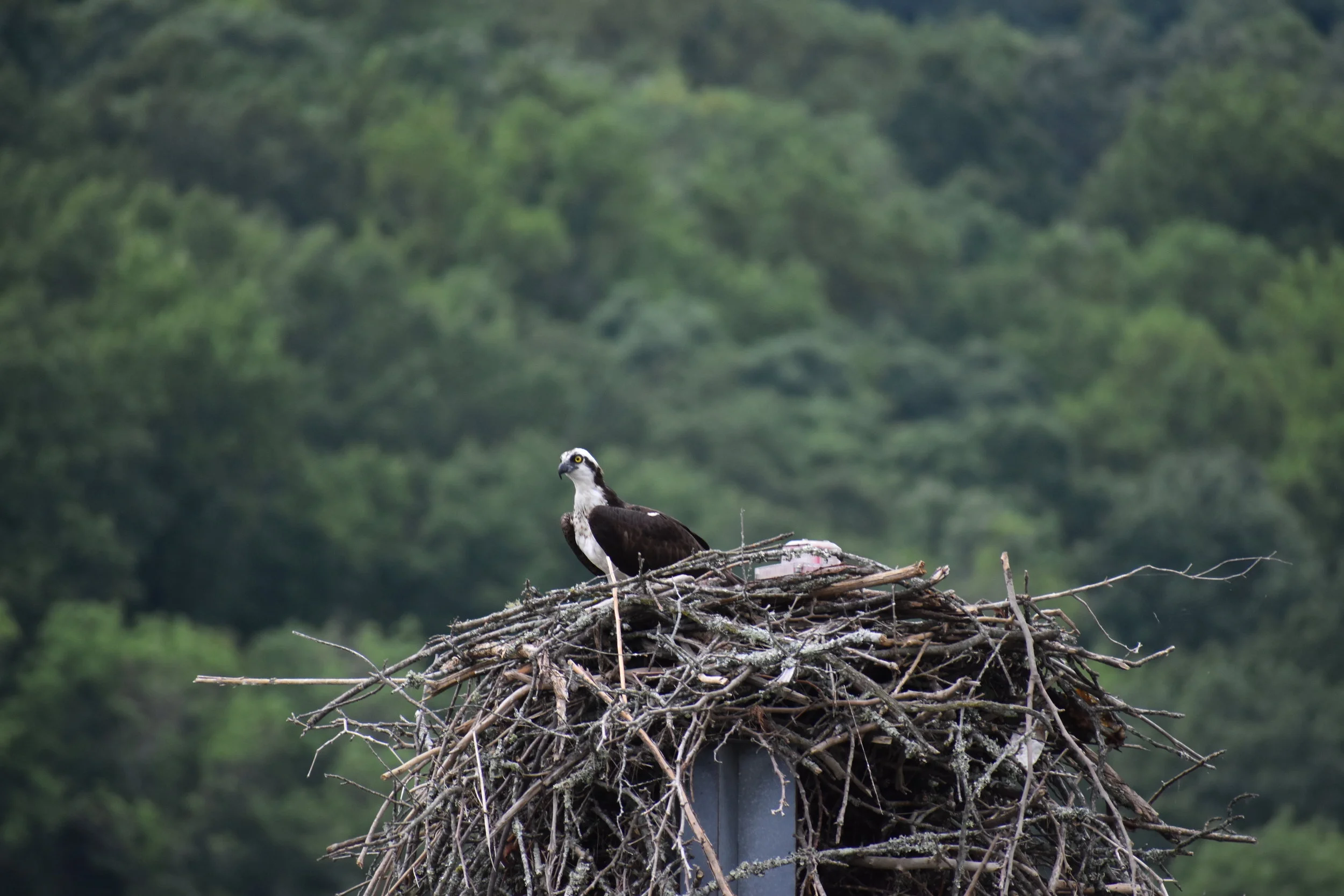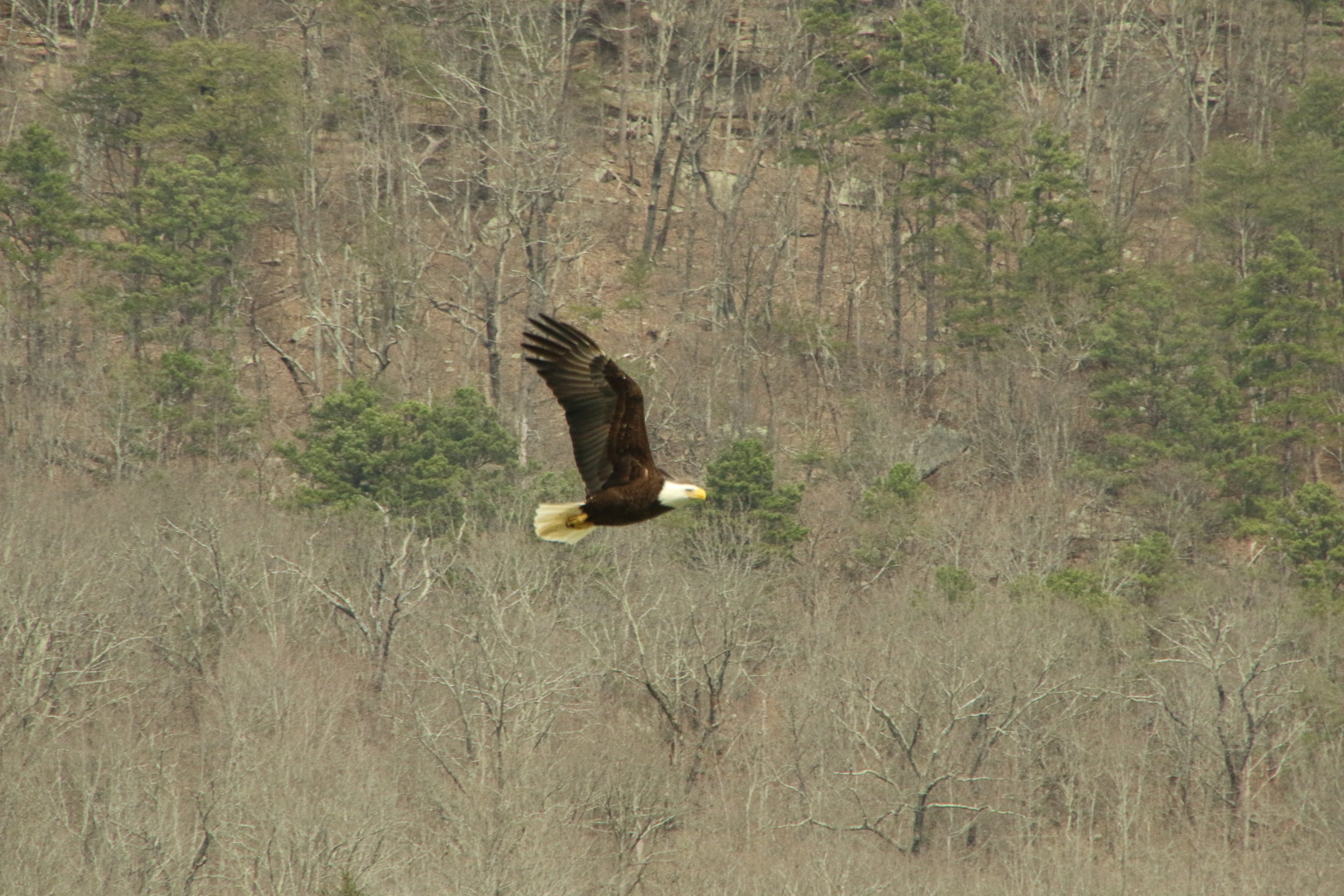Bird Watching in the Gorge
A Bald Eagle flying past Wiliam’s Island
Did you know that there are over 1,000 species of birds in North America and roughly 10,000 worldwide? These numbers make them one of the most diverse groups of animals on Earth! Thanks to their unique ability to fly, birds have been able to utilize a wide variety of ecosystems and colonize remote areas. These ancestors of theropod dinosaurs now inhabit almost every corner of the planet. By living in the southeastern United States, we are lucky enough to have a considerable subset of this massive class of animals right in our own backyard.
Whether you are a curious outdoor enthusiast or a life long birder, you’ll be amazed at the diversity of birds in the Tennessee River Gorge (Gorge). Only a short 5-mile trip from downtown Chattanooga, the Gorge is an incredibly biologically diverse area. With 17,000 acres of protected lands, the Gorge remains largely forested and contains healthy ecosystems that are prime for bird watching.
The Gorge begins at William’s Island and extends through a winding canyon to Nickajack Lake. Starting around William’s Island, you can observe Osprey that return each spring to breed and nest on tall platforms in the middle of the river. Continuing through the Gorge by river, you may encounter Bald Eagles, Kingfishers, Mallards, Wood Ducks, Blue Herons, Cormorants, Tree Swallows, and many more. The time of year will affect which species you encounter since some of the Gorge’s birds are permanent residents while others are migratory species that either come to breed in the summer or just briefly pass through during migration. If you step into the forest along the banks of the river, you’ll began to see a whole new set of species ranging from charismatic woodpeckers to vibrant warblers.
An Indigo Bunting at the Bird Observatory
The Gorge serves as an important migratory corridor for many neotropical songbirds and raptors. Exploring the many miles of trails in the Gorge will lead you to some exciting species. The beautiful colors of the Summer and Scarlet Tanagers, Hooded Warbler, and Yellow-throated Warbler can all be seen as you walk the wooded trails of Pot Point and Ritchie Hollow. Larger birds such as the Wild Turkey, Pileated Woodpecker, and many birds of prey may also be seen or heard from the trail.
At stream crossings along trails, you are likely to see the bobbing tail of a Louisiana Waterthrush as they search for invertebrates to feed their young in the spring and summer months. Be sure to keep an eye out for the Louisiana Waterthrush and Eastern Phoebe the next time you visit one of your favorite blue holes; they love these spots too. When passing forest edges, clearings, and brushy areas, you may hear the Indigo Bunting sing a song that sounds like “fire; fire; where? where? here; here; see it? See it?” or the buzzy ascending notes of the Prairie Warbler. The list goes on and on. To see a list of birds that TRGT avian researchers have captured and banded at the Bird Observatory, check out this link.
At some point in time, you will likely come across a bird species that you cannot identify. This is part of the fun! Bird field guides and online resources can help you identify these tricky species, such as the Sibley Guide or Cornell’s All About Birds website. There are also many smartphone apps, such as Cornell’s Merlin Bird ID app or Audubon’s Bird Guide.
Mallards in the Tennessee River
A Yellow-throated Warbler at the Bird Observatory
If you prefer to take a drive to get your daily dose of bird watching, TVA’s Raccoon Mountain observation deck provides a great view of the Gorge where soaring hawks, falcons, eagles, and vultures are often seen. For a more rustic viewing spot, adventuring into the Prentice Cooper State Forest to find Snooper’s Rock offers another gorgeous vantage point of the fourth largest canyon east of the Mississippi.
Birding is a life-long passion for million’s of people around the world due to its ease of accessibility and minimal equipment. With a pair of binoculars and birding app or field guide, the Tennessee River Gorge is a perfect place to begin learning the birds of the area!
If you have any questions about birding or come across a species you cannot identify, please feel free to email the Tennessee River Gorge Trust at info@trgt.org and we will be happy to help! Also, keep an eye out on our homepage for public bird banding days where participants can observe researchers capture and tag wild birds.



